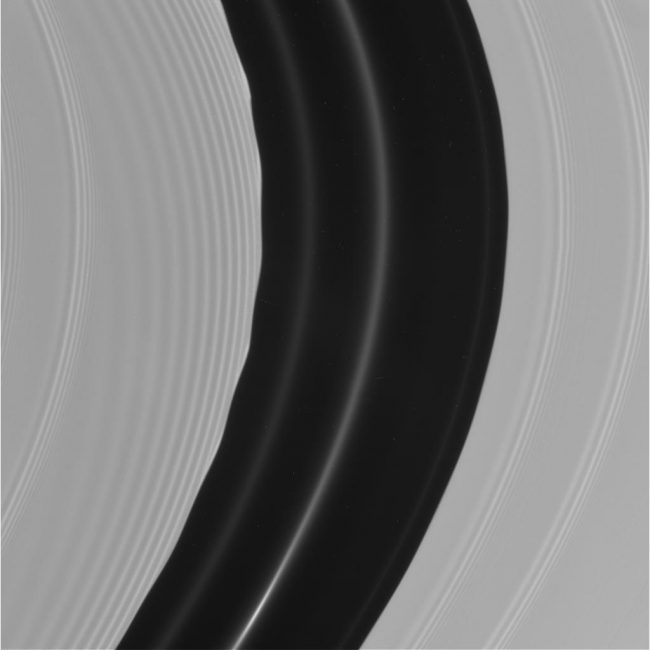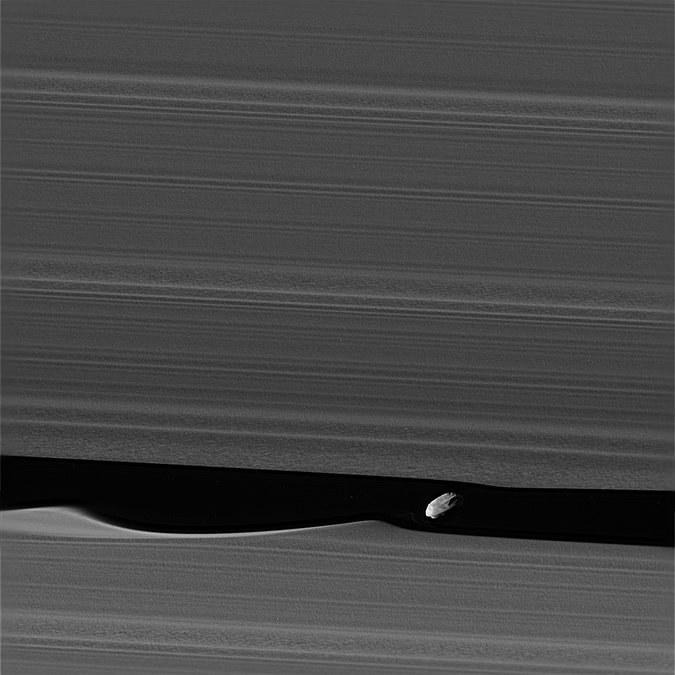
NASA’s Cassini spacecraft – now in its grand finale year orbiting Saturn – caught the series of close-ups above of the little Saturn moon Pan on March 7, 2017. Scientists are saying that weird ridge around Pan’s equator could be a couple of miles high and is likely made of dust from Saturn’s rings. Carolyn C. Porco, who leads Cassini’s imaging team, told the New York Times she was asleep when Cassini’s shots were transmitted to Earth and first saw an image on Twitter:
I saw this picture, and I thought, that’s an artist’s conception. Then I realized it was real.
Pan is named for the flute-playing Greek god of hunters and shepherds and is one of Saturn’s shepherd satellites. That is, it’s responsible for clearing one of the gaps in Saturn’s rings – in this case, the Encke Gap – keeping it free of ring particles.

Scientists discovered Pan in 1990 via an analysis of old Voyager 2 images, after noticing the edges of Saturn’s rings, along Encke Gap, had a wavelike appearance.
They thought the waves must come in the gravitational wake of a small moon orbiting within the gap, and so they do. Pan is the source of the waves.
The Cassini imaging team must feel a bittersweetness about the transformation of our knowledge of this moon – from zero to amazing – since 2004, when Cassini began orbiting Saturn. This is, after all, Cassini’s final year, which is why it’s now plunging so close. In fact, next month, Cassini will begin a series of 22 plunges through the gap between Saturn itself and the rings – an unexplored space only about 1,500 miles (2,400 km) wide. The first dive is scheduled for April 27.
Cassini will end its glorious career at Saturn by plunging into the gaseous body of the planet itself, in September 2017.
But there’s a lot more to come between now and then!
Read more from NASA: Saturn tour highlights 2017

Bottom line: Clearest images ever seen of Saturn’s moon Pan.











